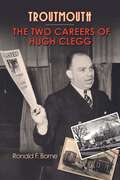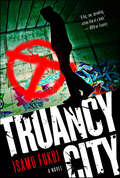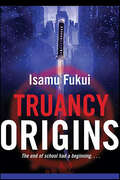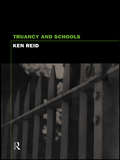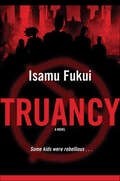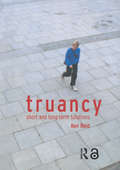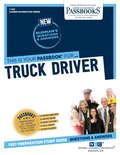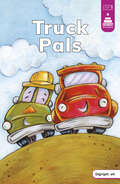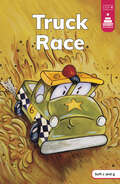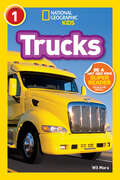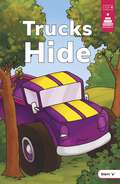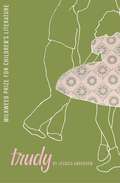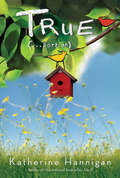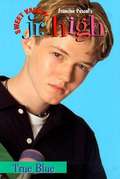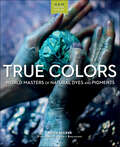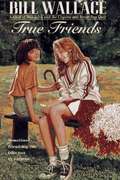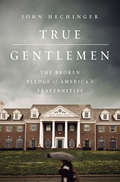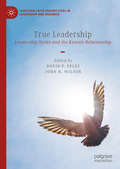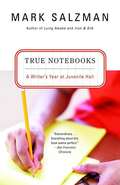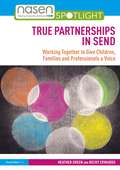- Table View
- List View
Troutmouth: The Two Careers of Hugh Clegg
by Ronald F. BorneHugh Clegg (1898-1979) was among the most notable Mississippi historical figures during the 1920s through the 1960s. Born in Mathiston, Mississippi, he was a member of the Federal Bureau of Investigation from 1926 to 1954, during which time he rose to the top leadership and worked directly under Director J. Edgar Hoover and Associate Director Clyde Tolson. In his second career, as executive assistant to Chancellor J. D. Williams at the University of Mississippi from 1954 to 1969, he was in a top leadership position before and during the civil rights crises in the State of Mississippi and at Ole Miss.While with the Bureau, Clegg's responsibilities included leading the search for many of the most dangerous gangsters in the country, including John Dillinger, Baby Face Nelson, the Barker gang, and Alvin Karpis. He established the FBI's National Training Academy and coordinated the hunt for atom bomb spy Harry Gold, collaborator with German spy Emil Klaus Fuchs. He was sent to England by Director Hoover prior to the outbreak of World War II to study British intelligence agencies.A close friend of many of the leading federal and state elected officials and of members of the US Supreme Court, Clegg was well known to many in power. At the University of Mississippi he was the prime contact between the university and the federal government during the desegregation crises of Clennon King and James Meredith. He was also assigned the lead role in combating the efforts of Mississippi politicians to discredit and remove faculty members when scholars were thought "too liberal" and therefore a threat to the state.Through a Freedom of Information request from the FBI, author Ronald F. Borne obtained thousands of pertinent documents. In addition, he mined Clegg's oral history and an unpublished book manuscript. Borne interviewed close relations, colleagues, and friends to reveal a portrait of a distinguished, loyal man who significantly shaped the training procedures for the FBI and then mediated the University of Mississippi's conflicts with both state officials and the federal government.
Troy High
by Shana NorrisBest friends Cassie and Greg get caught in the middle of a decades-old football rivalry between their high school teams, the Spartans and the Trojans, in this novel loosely based on Homer's classic tale, the Iliad.
Truancy City: A Novel
by Isamu FukuiAs a new threat arises from outside the walls of the City, the warring Truants and Educators must join forces or be destroyed. The fate of the City is determined at last in this long-awaited conclusion to the Truancy trilogy.At the Publisher's request, this title is being sold without Digital Rights Management Software (DRM) applied.
Truancy Origins (Truancy Ser.)
by Isamu FukuiFifteen years ago, the Mayor of the Education City was presented with an unwelcome surprise by his superiors: twin six-month-old boys. As the Mayor reluctantly accepted the two babies, he had no way of knowing that they would change the city forever….Raised in the comfort of the Mayoral mansion, Umasi and Zen are as different as two brothers can be. Umasi is a good student; Zen an indifferent one. They love their adoptive father, but in a city where education is absolute, even he cannot keep them sheltered from the harsh realities of the school system. But when they discover that their father is responsible for their suffering, affection turns to bitterness. Umasi and Zen are thrust onto two diverging paths. One will try to destroy the City. The other will try to stop him. At the Publisher's request, this title is being sold without Digital Rights Management Software (DRM) applied.
Truancy and Schools: A Practical Manual For Primary And Secondary Schools
by Ken ReidAt present about one million pupils truant from their schools on a daily basis and this book examines why they do it. The numerous reasons for truanting discussed are: * disadvantageous home backgrounds * problems with settling in socially at school * poor performance in school * experiencing bullying in school * not coping with the transition from primary to secondary schooling. This book focuses on the social, psychological and educational causes of truancy. It examines recent research and gives many examples of good practice while also detailing the latest solutions for tackling this problem. The text is for teachers, heads of year and department heads, senior school managers, education welfare officers, social workers, educational psychologists, parents and all those with an interest in educational policy and practice.
Truancy: A Novel (Truancy Ser. #1)
by Isamu FukuiIn an alternate world, in a nameless totalitarian city, the autocratic Mayor rules the school system with an iron fist, with the help of his Educators. Fighting against the Mayor and his repressive Educators is a group of former students called the Truancy, whose goal is to take down the system by any means possible—at any cost. Against this backdrop, fifteen-year-old Tack is just trying to survive. His days are filled with sadistic teachers, unrelenting schoolwork, and indifferent parents. Things start to look up when he meets Umasi, a mysterious boy who runs a lemonade stand in an uninhabited district. Then someone close to Tack gets killed in the crossfire between the Educators and the Truants, and Tack swears vengeance. To achieve his purpose, he abandons his old life and joins the Truancy. There, he confronts Zyid, an enigmatic leader with his own plans for Tack. But Tack soon finds himself torn between his desire for vengeance and his growing sympathy for the Truants…. Isamu Fukui wrote Truancy during the summer of his fifteenth year. The author's purpose is not just to entertain, but to make a statement about the futility of the endless cycle of violence in the world as well as the state of the educational system. And, as he put it, "I need to be in school myself if I want to write about it."At the Publisher's request, this title is being sold without Digital Rights Management Software (DRM) applied.
Truancy: Short and Long-term Solutions
by Ken ReidTruancy: Short and Long-term Solutions is a practical and accessible guide to dealing with the problem of truancy and non-attendance. It is the first book on the issue to actively focus on solutions to the problem, rather than the causes. Full of practical examples of the latest ways in which schools, teachers, education welfare officers and LEAs try to overcome their attendance difficulties. Ken Reid identifies nearly 120 short-term solutions as well as several long-term strategic approaches. The book also considers parental-condoned absenteeism, alternative curriculum schemes and mentoring, while the final chapter presents some strategic issues which policy-makers and politicians need to overcome. This book provides all teachers, deputy heads, head teachers, education welfare staff, social workers, learning mentors and other caring professionals with a repository of up-to-date ideas and solutions. It is essential reading for anyone involved in addressing the challenge of truancy.
Truck Driver: Passbooks Study Guide (Career Examination Series)
by National Learning CorporationThe Truck Driver Passbook® prepares you for your test by allowing you to take practice exams in the subjects you need to study. It provides hundreds of questions and answers in the areas that will likely be covered on your upcoming exam, including but not limited to: tools and test equipment used in vehicle maintenance; operation of motor vehicles; vehicle and traffic laws; principles, procedures and equipment used in garbage collection; vehicle operation, maintenance and repair; and more.
Truck Pals (Stairway Decodables Step 3)
by Leanna KochDom wants to play with his truck pals, but Jeff and Ross are busy finishing a big job. When Dom becomes sad, his friends suggest he help them. With the job done, will it be time to play? Stairway Decodables is a supplemental phonics resource that’s perfect for supporting small group instruction, independent reading, or reading practice at home. This title provides practice in decoding words with consonant digraph wh.
Truck Race (Stairway Decodables Step 4)
by Leanna KochReady, set, go! Three truck friends are off to the races. Who will win? Stairway Decodables is a supplemental phonics resource that’s perfect for supporting small group instruction, independent reading, or reading practice at home. This title provides practice in decoding words with soft c and g.
Trucks (Readers)
by Wil MaraWho can resist trucks? They&’re loud. They&’re complicated. They have wheels twice as tall as your dad. Trucks! has many cool images of the trucks we know and love. There are also curiosities like the $3 million mining truck that&’s "like driving a house." This level 1 text is revved up with sound words and images to steer young readers on the road to reading success.National Geographic supports K-12 educators with ELA Common Core Resources.Visit www.natgeoed.org/commoncore for more information.
Trucks Hide (Stairway Decodables Step 4)
by Leanna KochThe search is on as four truck friends enjoy a game of Trucks Hide. Come along with Race Truck as he hunts for his skilled friends. Everyone's a winner when fun is the name of the game. Stairway Decodables is a supplemental phonics resource that’s perfect for supporting small group instruction, independent reading, or reading practice at home. This title provides practice in decoding words with silent e.
Trudy
by Jessica Lee AndersonTrudy's parents are older than other kids' parents -- Trudy's mom was fifty-three when Trudy was born. Now, as Trudy enters middle school, her parents are in their sixties and seventies. They are so old, in fact, that most people mistake them for her grandparents. As if that isn't complicated enough, Trudy's also having a hard time at school. Math class isn't going so well, and Ashley-who she pinky swore she would always be best friends with -- has ditched her for a new crowd. Life at Benavidez Middle School is an adjustment, and she misses the way her life used to be.
True (. . . Sort Of)
by Katherine HanniganTrue: Delly Pattison likes surpresents (presents that are a surprise). The day the Boyds come to town, Delly's sure a special surpresent is on its way. But lately, everything that she thinks will be good and fun turns into trouble. She's never needed a surpresent more than now. True: Brud Kinney wants to play basketball like nothing anybody's ever seen. When the Boyds arrive, though, Brud meets someone who plays like nothing he's ever seen. True: Ferris Boyd isn't like anyone Delly or Brud have ever met. Ferris is a real mysturiosity (an extremely curious mystery). True: Katherine Hannigan's first novel since her acclaimed Ida B is a compelling look at the ways friendships and truths are discovered. It's all true ( . . . sort of).
True American: Language, Identity, and the Education of Immigrant Children
by Rosemary C. SalomoneHow can schools meet the needs of an increasingly diverse population of newcomers? Do bilingual programs help children transition into American life, or do they keep them in a linguistic ghetto? Are immigrants who maintain their native language uninterested in being American, or are they committed to changing what it means to be American? In this ambitious book, Rosemary Salomone uses the heated debate over how best to educate immigrant children as a way to explore what national identity means in an age of globalization, transnationalism, and dual citizenship. She demolishes popular myths—that bilingualism impedes academic success, that English is under threat in contemporary America, that immigrants are reluctant to learn English, or that the ancestors of today’s assimilated Americans had all to gain and nothing to lose in abandoning their family language. She lucidly reveals the little-known legislative history of bilingual education, its dizzying range of meanings in different schools, districts, and states, and the difficulty in proving or disproving whether it works—or defining it as a legal right. In eye-opening comparisons, Salomone suggests that the simultaneous spread of English and the push toward multilingualism in western Europe offer economic and political advantages from which the U.S. could learn. She argues eloquently that multilingualism can and should be part of a meaningful education and responsible national citizenship in a globalized world.
True Blue (Sweet Valley Junior High #18)
by Jamie Suzanne Francine PascalDon't get him wrong. Blue thinks living by the beach is awesome. But that doesn't mean he wants to hang there all the time. After all, school can be pretty cool sometimes. Especially when Elizabeth Wakefield is around.
True Colors: World Masters of Natural Dyes and Pigments
by Keith ReckerThis updated 2nd edition features a revised chapter. True Colors is about artists who create color from natural materials and about the historical importance and environmental sustainability of this practice. Deep conversations with 26 artisans from every part of the globe reveal their wisdom, traditions, and know-how—and suggest that we ignore what they know at our peril. Traditional approaches to making color offer sustainable options to a fashion system badly in need of them and memorable cultural narratives to a world hungry for beauty and spirituality. True Colors provides an immersive visual experience and an inspiring travelogue of personal stories and practical information from artists who are leaving their mark on the world.
True Friends
by Bill WallaceSometimes, friendship can take you by surprise but Judy, a girl with cerebral palsy had a motto: "If you fall down, just get up and keep going."
True Gentlemen: The Broken Pledge of America's Fraternities
by John HechingerCollege fraternity culture has never been more embattled. Once a mainstay of campus life, fraternities are now subject to withering criticism for reinforcing white male privilege and undermining the lasting social and economic value of a college education.No fraternity embodies this problem more than Sigma Alpha Epsilon, a national organization with more than 15,000 undergraduate brothers spread over 230 chapters nationwide. While SAE enrollment is still strong, it has been pilloried for what John Hechinger calls "the unholy trinity of fraternity life": racism, deadly drinking, and misogyny. Hazing rituals have killed ten undergraduates in its chapters since 2005, and, in 2015, a video of a racist chant breaking out among its Oklahoma University members went viral. That same year, SAE was singled out by a documentary on campus rape, The Hunting Ground. Yet despite these problems and others, SAE remains a large institution with strong ties to Wall Street and significant political reach.In True Gentlemen, Hechinger embarks on a deep investigation of SAE and fraternity culture generally, exposing the vast gulf between its founding ideals and the realities of its impact on colleges and the world at large. He shows how national fraternities are reacting to a slowly dawning new reality, and asks what the rest of us should do about it. Should we ban them outright, or will they only be driven underground? Can an institution this broken be saved? With rare access and skillful storytelling, Hechinger draws a fascinating and necessary portrait of an institution in deep need of reform, and makes a case for how it can happen.
True Girl Mom-Daughter Devos: with Coloring Experience (True Girl)
by Dannah GreshWant help talking to your tween about modesty? Tweens aren&’t meant to grapple with modesty and body image issues alone. But many moms don&’t know quite how to talk about these issues. True Girl Mom-Daughter Devos fills that gap. A companion to True Girl, it cements the truths of that book and provides an opportunity for moms to talk through these important issues with their daughters. It&’s not just a book, but a connecting experience for mothers and daughters. Together they&’ll go on a journey to meet with their Creator and learn to see themselves through His eyes. True Girl Mom-Daughter Devos has a simple format of 30 daily devotions. It features:Weekly interactive conversation startersA leader&’s guide appendix at the endDownloadable resources at the author&’s website. The True Girl Series exists to bring moms and daughters together for age-appropriate, biblical conversations about true beauty, modesty, and purity.
True Girl Mom-Daughter Devos: with Coloring Experience (True Girl)
by Dannah GreshWant help talking to your tween about modesty? Tweens aren&’t meant to grapple with modesty and body image issues alone. But many moms don&’t know quite how to talk about these issues. True Girl Mom-Daughter Devos fills that gap. A companion to True Girl, it cements the truths of that book and provides an opportunity for moms to talk through these important issues with their daughters. It&’s not just a book, but a connecting experience for mothers and daughters. Together they&’ll go on a journey to meet with their Creator and learn to see themselves through His eyes. True Girl Mom-Daughter Devos has a simple format of 30 daily devotions. It features:Weekly interactive conversation startersA leader&’s guide appendix at the endDownloadable resources at the author&’s website. The True Girl Series exists to bring moms and daughters together for age-appropriate, biblical conversations about true beauty, modesty, and purity.
True Leadership: Leadership Styles and the Kenotic Relationship (Christian Faith Perspectives in Leadership and Business)
by David P. Peltz John H. WilsonThis edited collection addresses several forms of moral leadership within the context of kenosis, bringing together both secular and biblical perspectives on the role of morality and self-sacrifice in effective leadership theory and practice. The contributors apply various leadership theories in the analysis of sacred texts in order to uncover unique insights into the biblical truth about leadership. Their analysis moves away from egotistical leadership focused on self-aggrandizement and provides a new model for leadership - one characterized by morality, authenticity, and service. True Leadership will benefit scholars, researchers, and students interested in values-based leadership and seeking to enrich their understanding of organizational behavior and leadership development.
True North: A Memoir
by Jill Ker ConwayTrue North is the inspirational Canadian chapter of Jill Ker Conway's life story, which began with her bestselling memoir, The Road from Coorain. Beginning with her departure from Australia, Jill Ker Conway tells of her romance with Harvard House Master John Conway, of coming to grips with his manic-depressive disorder, and of their move to Canada in 1964 where she became the first female vice-president at the University of Toronto. In this vibrant memoir, we watch as a most private woman makes of herself a public persona in Canada.
True Notebooks: A Writer's Year at Juvenile Hall
by Mark SalzmanThe author teaches the adolescent inmates at juvenile hall whose crimes vary from minor ones to murder.
True Partnerships in SEND: Working Together to Give Children, Families and Professionals a Voice (nasen spotlight)
by Becky Edwards Heather GreenDrawing from first-hand discussions and interviews, this essential guide offers an in-depth, realistic overview of bringing up a child with complex and specific needs to enhance current practice and collaborative work with parents. This book supports the development of effective child-centred planning and family-centred approaches, by using the expert voices and lived experiences of parents to inform critical discussion and build the skills of professionals. Chapters provide strategies, guidance and suggestions to strengthen effective partnership work with parents, children and young people. Scenarios, key takeaways and questions for discussion are also woven throughout, offering a greater understanding of the barriers faced by parents of children with SEND and encouraging the reader to consider how they can more effectively co-produce with families. True Partnerships in SEND uses the voice of the parent and their lived experiences as the basis for narrative, research and discussion and includes wider concepts that can inform positive parent-professional interactions globally. It will be essential reading for SENCOs, teachers and other education professionals working with children with SEND and their families.
